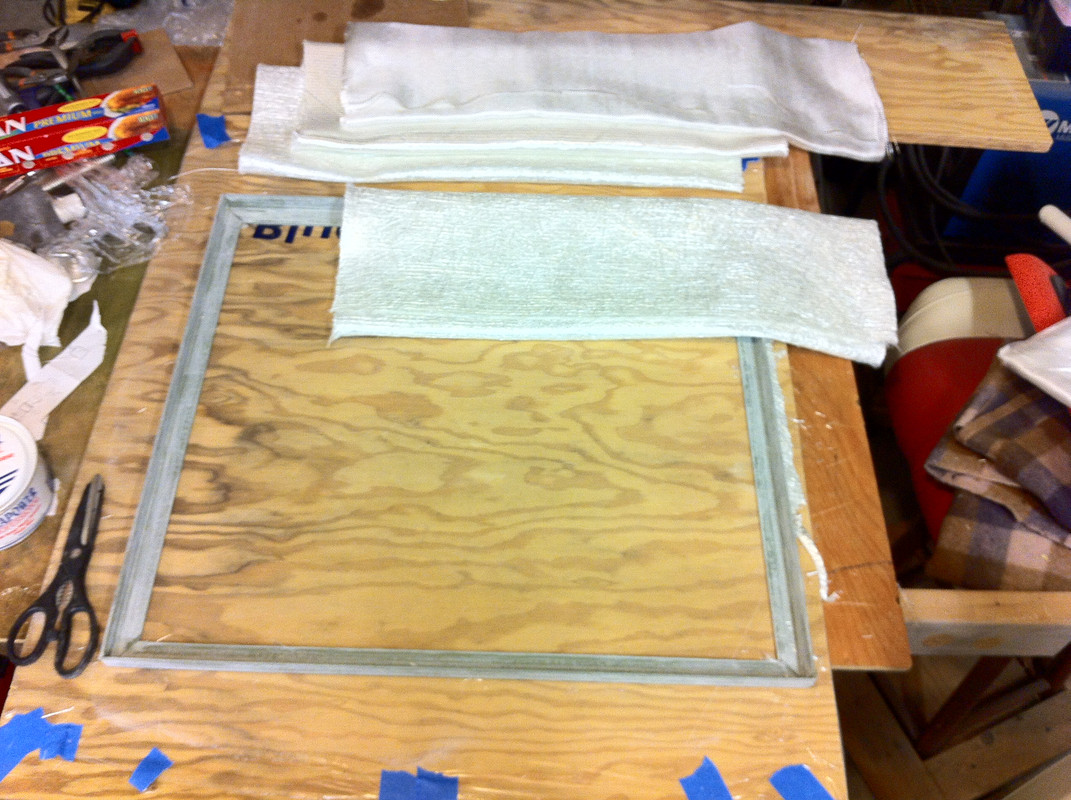Polyester resin it totally fine to use and is much less expensive than epoxy. Epoxy is stronger, but that's not really something that comes into play here - polyester is more than strong enough - most boats are made with polyester. However, the big advantage of epoxy is that it's easier to work with and MUCH less smelly than polyester.
Pretty much any epoxy brand out there will be fine. Nothing wrong with West - I've used it plenty of times and still do - it's just more expensive. For the last big job I did, I ordered from US Composites.
The big advantage of the small squares is avoiding air pockets underneath. One thing to keep in mind is that when the boat was built, the floor was upside down and the topside gelcoat was actually the first part of the process. The squares were second last - with the underneath "onion skin" layer of glass being the last. In the case of a hatches, the same process happens, but the bottom layer is heavier glass, like 1708. When rebuilding a hatch, one layer of 1708 is plenty - it doesn't hurt anything to do a second layer of the stuff, it's just not really needed.
Here's a hatch that I built from scratch - about 2'x2' - and experimented with using just one piece of plywood. Even though I weighted it down, it still had air bubbles that were noticeable through the top layers of glass. To fix it, I simply took a grinder to the air bubbles and then came back and filled the voids before topcoating. Drilling a number of 1" holes in the wood probably would have done the trick - but I think I may have ended up with minor depressions where the holes were in the topside that still would need to be filled - or at least there's the chance of that. Using smaller squares would have been easier to avoid the air pockets. I took extra steps to first ensure that the "table" was perfectly flat.
On a larger hatch, that I mentioned above, using the foamboard eliminated the possibility of air pockets since it was flexible and I could slightly bend it as I was laying it in.




